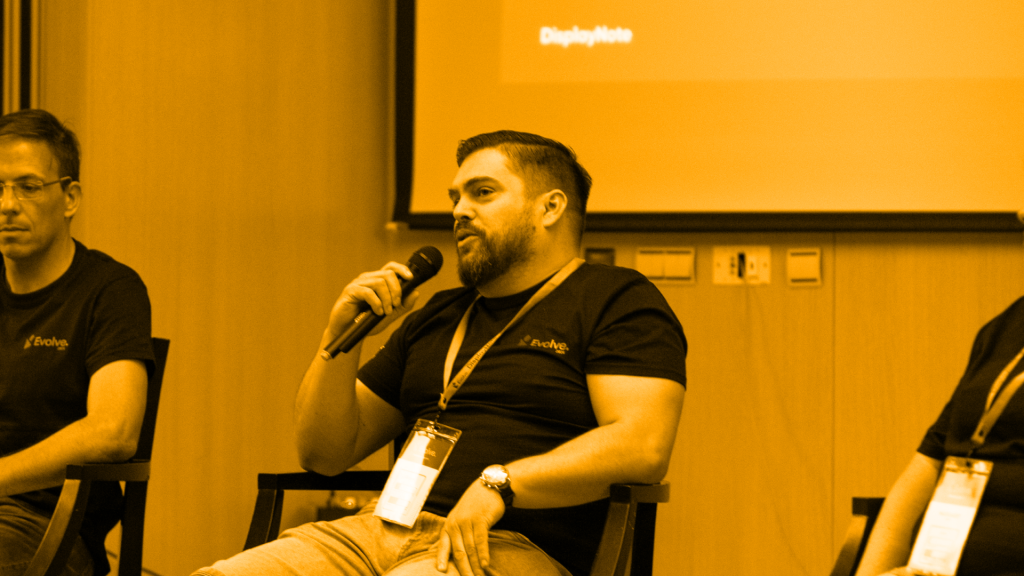
Meetings of the future. What will they look like?
What will meetings look like, ten years from now? Will they even still be called meetings?
Whether we love meetings, or hate them, they do serve a fundamental purpose – to bring people and ideas together, and to aid collaboration within an organisation.
But the days of traditional meetings are coming to an end. Technology is more advanced than ever, and this paired with higher expectations from the workforce, means that organisations (and their meetings) need to keep up, not only in ten years, but right now!We discuss what we believe the meetings of the future will look like…

1. Collaboration sessions
It’s difficult to talk about the future without at least one reference to millennials. Generation Y are predicted to occupy almost half of the working population by 2020. With their technological knowledge comes the demand, actually more like the expectation, for collaboration. This is only going to increase when Generation Z come into the working world. They have been constantly surrounded by choice, therefore require constant stimulation and the opportunity to develop their skills. We predict that meetings (and the workplace in general) will be entirely collaborative in ten years. Who knows, they might not even be called meetings anymore – perhaps something like ‘collaboration confabs’. Perhaps not. But time is becoming more and more precious, and shouldn’t be wasted. Can we really see our devices having external hardware plugged into them in order to work smarter, ten years from now? No. Meeting room technology will be minimalist, but extremely smart. By 2027 we believe that meeting rooms will be so smart, they will recognise whoever walks into the room, technology will “speak” to them, and their content will already be available virtually for them to start collaborating on.
2. Hybrid workspaces (and driverless cars)
By hybrid workspaces, we don’t necessarily mean working from home. I can’t count the number of times I’ve heard the question “will half of people be working from home by 2020?” Hybrid workspaces are more of a blend of working digitally, and working in a physical space, and it’s on the rise. It very well could mean working from home for some people, but it also means that people aren’t tied to a physical workplace in order to collaborate with their peers, and get stuff done. Think of a large organisation, that has multiple offices. Or a university, that has multiple campuses. People don’t need to travel to gather in the same meeting room, in order to collaborate. With today’s technology, collaboration solutions allow people to connect, collaborate and communicate with their colleagues, no matter their location, device type, or network. So imagine what the world of work will be like ten years from now? There are already prototypes of driverless cars. What’s to say in ten years, your driverless car could be your central hub, voice recognition allowing you to collaborate and communicate on projects.
3. Will we finally be paperless?
How long have we heard this word being thrown around? Well, back in 1975, Businessweek published an article by Arthur D Little, an analyst, predicting that paper use in the office would start to decline by 1980 and nearly disappear by 1990. The reality? Global consumption of paper has increased by almost half since 1980. But we think that the journey to going paperless will kickstart again, and we will eliminate paper-based meetings first. Why? There’s obviously the positive impact it will have on the environment. It will also reduce costs. But the main reason is there will be no more late updates. Printed documents are a bit like a new car… just as a car immediately depreciates in value as soon as you drive it, documents are immediately out of date as soon as you print them. If you’re on your way to a meeting, you are most likely on your way to discuss ideas or projects, and collaborate on them. Printing out information and bringing it with you is not the way to go about this. It’s incredibly likely that these documents will be added to, amended, or perhaps even scrapped altogether. What a waste of resource. Also, when these hybrid workspaces take over, the need for all content to be digital will be even higher. The meetings of the future will utilise (you got it) technology, to allow attendees to share what’s on their device to a main screen, and permit everyone to contribute to it and collaborate the original document itself. It also increases security – paper documents are not secure. They can be misplaced, stolen, destroyed. So the drivers to go paperless in the workplace are higher than ever before. Increasing productivity and security, and reducing costs. The paperless road is a long one, but we predict by 2027 (if not before), workplaces will be entirely paperless. We might even be screenless, with new display technology taking over!
4. Super security
We briefly mentioned security when it comes to paper documents. But security is extremely important when it comes to using new technology, such as collaboration solutions. They facilitate the sharing of content. They are transmitting very important information. This information needs to be as secure as possible. We know, from chatting to customers, that security is bigger than ever on the agenda when it comes to meeting room solutions. What used to be a ‘check off the list’ when deploying solutions, is now the first and fundamental thing customers are looking for, even in the research stage. If a solution’s security is not at the highest possible standard, their solution won’t even make the shortlist. This isn’t so much a prediction for ten years from now – this is “right now”. With retina and fingerprint recognition already being widely used, who knows how security measures will evolve in ten years.
5. Your meeting room, your rules
We’re already starting to see this, but it will become increasingly more common. Customers are using their voices, and instead of opting for off-the-shelf solutions, when they don’t exactly suit their needs, they are looking for adaption. Vendors can no longer dictate a customer’s needs – it’s the other way around. And so it should be. We’re not implying that all vendors must start offering solely customised solutions – but there should be some flexibility. Let’s take collaboration solution, Montage as an example. Ninety per cent of it stays as it is. Always. It’s got a common problem to solve. However it can be tailored to meet a certain organisation’s security, compliance and network recommendations. Not to mention, branding. We see customers having more of a say in meeting room solutions, and relationships making the transition from vendor/customer, to partnerships, working together. Ten years from now, will solutions even have their own branding? Or will all solutions be tailored to the customer’s branding?
We believe that the above 5 themes will play a huge role in meeting transformation in the future. But this transformation needs to be accelerated now, in order to keep up with today’s world, and continue to be successful.
Have we missed any trends? Let us know by tweeting us at @DisplayNote.
Want to stay in the loop?
Keep up-to-date with everything DisplayNote – including new releases, job openings, and customer giveaways.
Don’t worry, we’ll not spam you and we’ll never share your email with anyone






